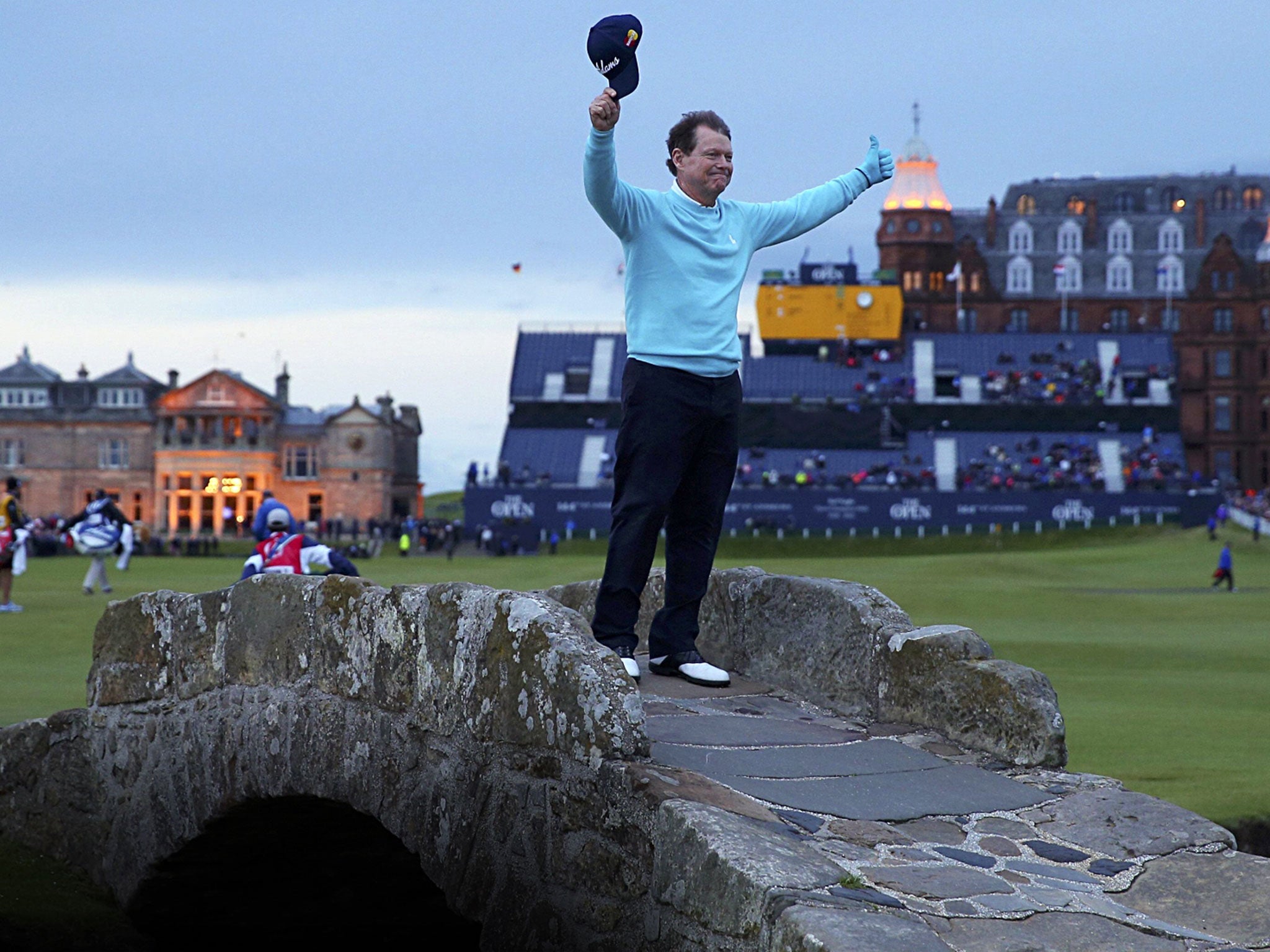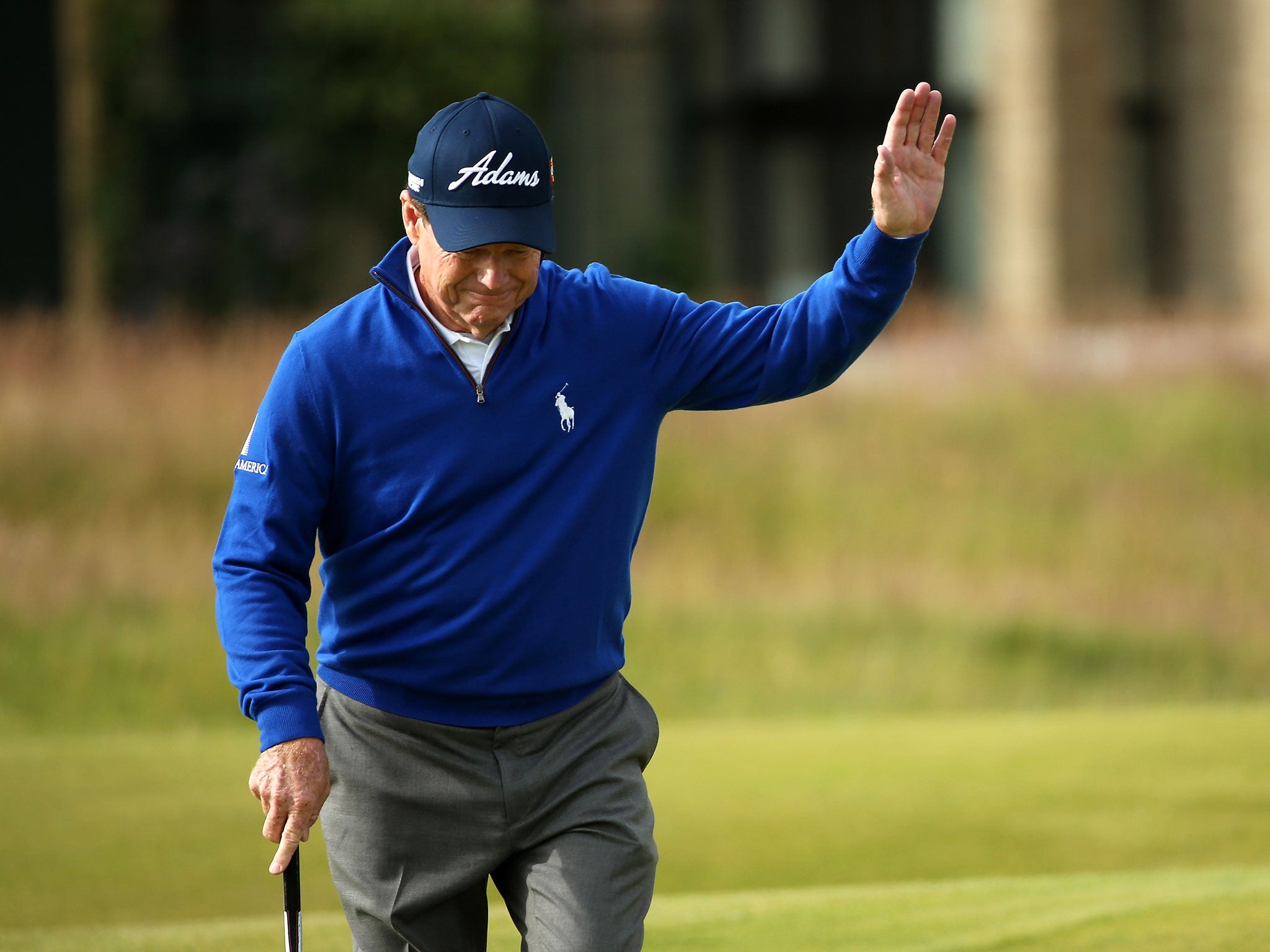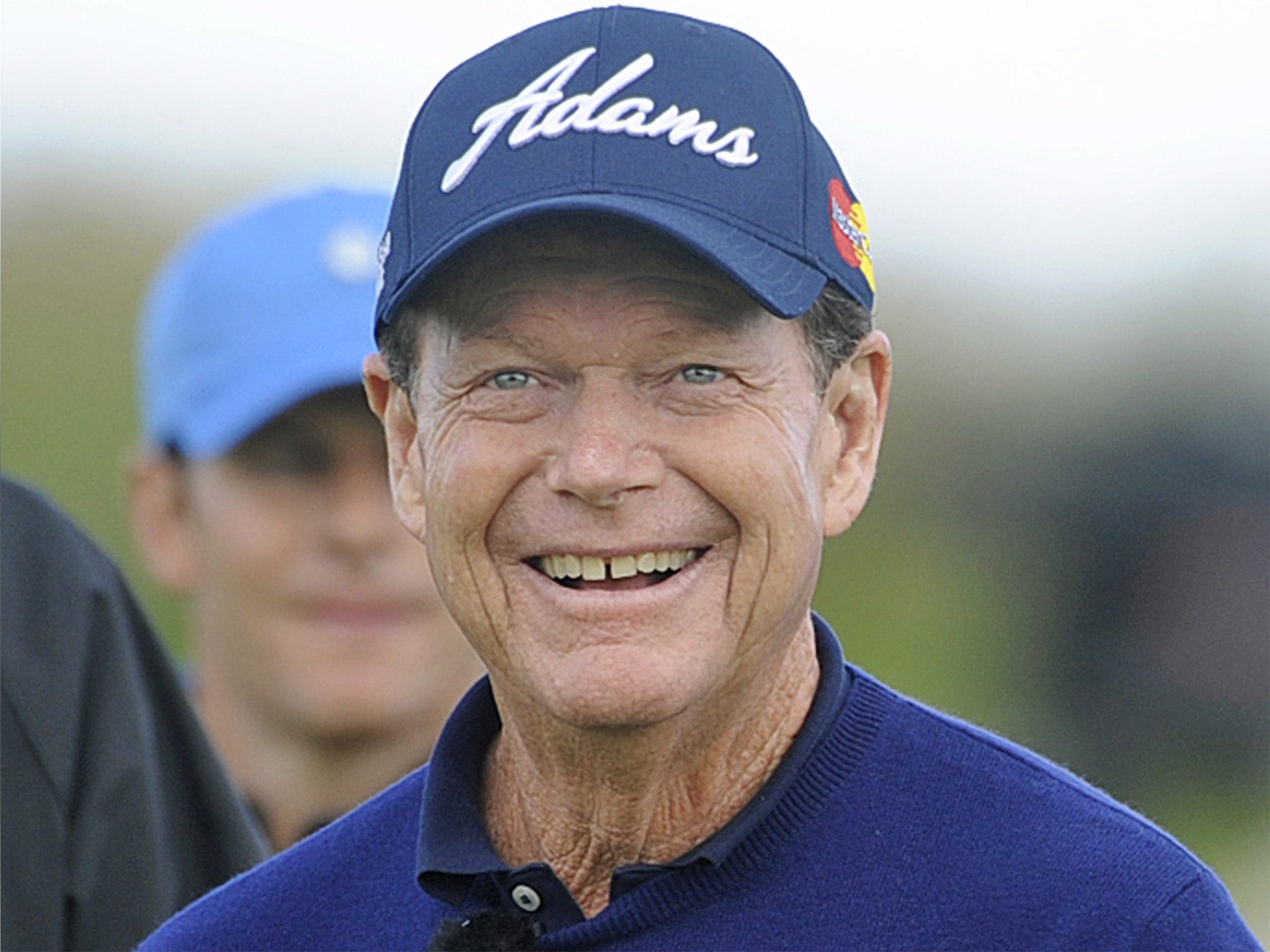The Open 2015: The old master Tom Watson crosses the last bridge
Tom Watson keeps composure after his final round in The Open where he was most successful player of last 40 years

Your support helps us to tell the story
From reproductive rights to climate change to Big Tech, The Independent is on the ground when the story is developing. Whether it's investigating the financials of Elon Musk's pro-Trump PAC or producing our latest documentary, 'The A Word', which shines a light on the American women fighting for reproductive rights, we know how important it is to parse out the facts from the messaging.
At such a critical moment in US history, we need reporters on the ground. Your donation allows us to keep sending journalists to speak to both sides of the story.
The Independent is trusted by Americans across the entire political spectrum. And unlike many other quality news outlets, we choose not to lock Americans out of our reporting and analysis with paywalls. We believe quality journalism should be available to everyone, paid for by those who can afford it.
Your support makes all the difference.It was too dark to tell but the man who blubbered his way up the 18th hole of the Old Course as he accompanied Jack Nicklaus on his farewell 10 years ago said he did not shed a tear as he said goodbye to The Open on Friday evening.
“Not a single one,” Tom Watson said. “My son almost cried, I know that. He almost cried on the 18th tee when I told him ‘Michael, there should be no tears, this should be all joy’.”
It was not quite the grandstand finish that Nicklaus enjoyed in 2005, there was certainly no closing birdie. It was touch and go whether he would finish at all, given the earlier rain delay. But with the agreement of his playing partners, Ernie Els and Brandt Snedeker, the group got to complete the sentimental journey of Watson’s 129th and last round in The Open.
In a way the circumstances made the five-time champion golfer’s farewell all the more poignant. As darkness descended, the lights on the buildings lining the fairway shone ever brighter and the illuminated R&A clubhouse acted like a welcoming beacon.
Sure, the stands had all but emptied out on a cold, blustery evening but, just before 10 o’clock, people spilled out of the town’s pubs and restaurants, and R&A members left their warm sanctuary to line the fairway. These were not spectators who were there anyway, but people who made an effort to be there, fans who could not miss the opportunity to pay homage to the most successful Open competitor of the last 40 years. Among players gathered at the back of the 18th green were Graeme McDowell, Matt Kuchar and Tom Lehman.
Through Watson’s mind flickered the legend of another beloved American golfer, the amateur Bobby Jones, returning to St Andrews for an unannounced outing on the Old Course. Jones had won the 1927 Open and the 1930 British Amateur, the first leg of his unprecedented and unrepeated Grand Slam. “Bobby’s back,” was the word that went round the town and thousands spilled onto the final fairways to engulf the returning hero.
“I’m not putting myself in the same shoes as Bobby Jones,” Watson said, “but as I was going across the road down the 18th fairway, I think I had an inkling of what he probably felt like when he walked up the 18th hole that day.”
Watson stopped on the Swilcan Bridge for the traditional photos, as Sir Nick Faldo had done earlier in the day. Watson also stopped and turned to the heavens.
Included in his thoughts were a couple of former caddies, Alfie Fyles and Bruce Edwards. “I didn’t know how I was going to feel walking across the bridge but I do know that I looked up in the sky and knew there were a lot of people watching, not just right here, a lot of loved ones.”
Earlier in the afternoon the stands rose as one when Watson teed off. “Right from the start of the round, the fans were so appreciative and their applause made me feel very humble,” he said.

Watson won his first claret jug at his first attempt, just across the estuary at Carnoustie in 1975. Two years later he defeated Nicklaus in the Duel in the Sun at Turnberry, still the most sustained and dramatic head-to-head showdown in The Open. At this stage Watson did not even like links golf, was still irritated by balls bouncing off into weird and less-than-wonderful places.
He grew to appreciate the ground game while playing in all sorts of weather at the likes of Ballybunion in Ireland and Royal Dornoch in Scotland. Open titles followed at Muirfield, Troon and Birkdale but at St Andrews in 1984 his quest to tie Harry Vardon’s record of six claret jugs floundered when he overshot the 17th green while Seve Ballesteros birdied the 18th.
At Turnberry in 2009 came another chance but the 59-year-old aged before our eyes in the playoff.
“I can’t be more grateful for what I’ve accomplished, but the thing is, it wasn’t so much what I’ve accomplished but what I overcame to get there,” he said. “Now it’s all joy. There’s no reason to be sad. I played a game for a living and played it pretty well at times.”

At 65, Watson is out of exemptions for The Open but admits his “toolbox” is not as well stocked as it once was. He will make his last appearance at the Masters next April. But he promised to return for any repeat of Wednesday’s Champion Golfers’ Challenge, which featured Arnold Palmer and Peter Thomson, the only other player in the last 100 years to win five Opens.
“I’ve been rambling a lot, I’m sorry,” Watson said, concluding his last press conference. “I guess emotion has taken a hold of me to a degree and I apologise for that. But it’s been a heck of a run.
“Now it is time to get on with the real golf tournament,” he added. If only the weather gods agreed.
Join our commenting forum
Join thought-provoking conversations, follow other Independent readers and see their replies
Comments